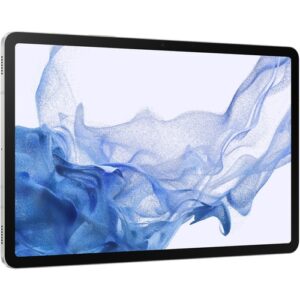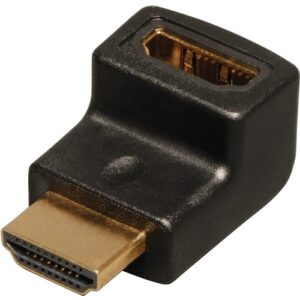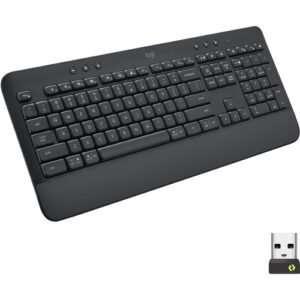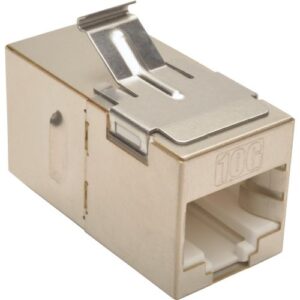Ubiquiti airFiber 60 GHz Long-Range Radio – Upto 7.5 Mile – 57 GHz to 71 GHz – 43 dBi – GPS
Send an inquiry
- Low-Interference 60 GHz Spectrum
- Integrated GPS
- Long Range, Up to 12 km
- Precision Alignment Mount Included
- link.ui.com Planning Support
- Quick Setup Using the UISP™ App via Bluetooth
SKU:
AF60-LR-US
Category: Accessories
Related products
Rocstor USB C to 3.5mm Audio Adapter – Premium USB-C to 3.5mm Audio Adapter – USB Type C to AUX Female Wired Headphone Jack w/32-bit DAC Active Digital Sound Card for Headset – Compatible with Windows®. macOS®, Chrome®, USB-C, Thunderbolt™ 3, iPad® (with USB-C), Pixel® 3, 4, 5, 6. Samsung Galaxy – Black – TAA Compliance
- Extremely smooth and high quality audio signal
- Enhance 3dB analog signal out
- 32-bit DAC Active Digital Sound Card for Headset
- Easily compatible with all types of jack designs
- High sampling rate, resulting in noise free and distortion-less audio
- Light-weight adapter, easily fits into your bag or pocket
Logitech C920e Webcam – 3 Megapixel – 30 fps – USB Type A – TAA Compliant – 1920 x 1080 Video – Auto-focus – Microphone – Notebook, Monitor – TAA Compliance
Adesso 13″ POS Cash Drawer Tray – Cash Tray – 4 Bill/5 Coin Compartment(s)
This is the insert tray and coin case for the Adesso MRP-13CD, which can be obtained separately. This durable cash tray is able to hold a maximum weight load of up to 30 kg. The coin case insert is removable, while the coin dividers are adjustable for customized storage space options. More from the Manufacturer
Samsung Galaxy Tab S8 Tablet – 11″ WQXGA – Octa-core 2.99 GHz 2.40 GHz 1.70 GHz) – 8 GB RAM – 256 GB Storage – Android 12 – Silver – Qualcomm SM8450 Snapdragon 8 Gen 1 SoC – Upto 1 TB microSD, microSDXC Supported – 2560 x 1600 – 12 Megapixel Front Camera – 15 Hours Maximum Battery Run Time
Tripp Lite HDMI Right Angle Up Adapter/Coupler (M/F) 4K @ 60Hz – 1 x HDMI Male Digital Audio/Video – 1 x HDMI Female Digital Audio/Video – Gold Plated Connector – Black – RoHS Compliance
The 90-degree angle of this adapter allows you to reposition the HDMI jack for better access where space is tight. This adapter also offers a great way to protect your HDMI cables and equipment from strain and damage, since HDMI cables have relatively small connectors and jacks that must bear the brunt of the cable's weight. The plug-and-play design makes installation a breeze. The P142-000-UP Right Angle HDMI Adapter features gold-plated connectors for optimal signal transmission quality. Provides clean, uncompressed digital signals. Supports video resolution up to 1080p. Ver 1.3 and 1.4 compliant.
Logitech Signature K650 Wireless Comfort Keyboard – Wireless Connectivity – Bluetooth/RF – 32.81 ft – PC, Mac – AA Battery Size Supported – Graphite – TAA Compliance
Tripp Lite Cat6a Straight-Through Modular Shielded In-Line Snap-In Coupler (RJ45 F/F) – 1 x RJ-45 Network Female – 1 x RJ-45 Network Female – Gold Contact – Silver – TAA Compliant – TAA Compliance
Strengthen your high-speed network with Tripp Lite's N235-001-SH-6A Cat6a Straight-Through Modular Shielded In-Line Snap-In Coupler. It connects two Cat6a patch cords to create one longer cable, and its keystone design is perfect for convenient feed-through patching when used with a standard data wallplate(such as Tripp Lite's N042-001-WH). Built for ultra-fast performance, this is an ideal coupler when setting up premise wiring, telecommunications, data networking and Ethernet connections. Compatible with all Cat6a cables, regardless of what size wire they use, the N235-001-SH-6A's protective metal housing is fully shielded to reduce EMI/RFI interference that can damage or degrade data. This coupler features straight-through wiring and 50-µinch gold-plated contacts designed to resist corrosion. The N235-001-SH-6A is UL-listed and meets all requirements for EIA/TIA Category 6A compliance. It's also backward compatible with Cat6, Cat5e and Cat5 LANs.










